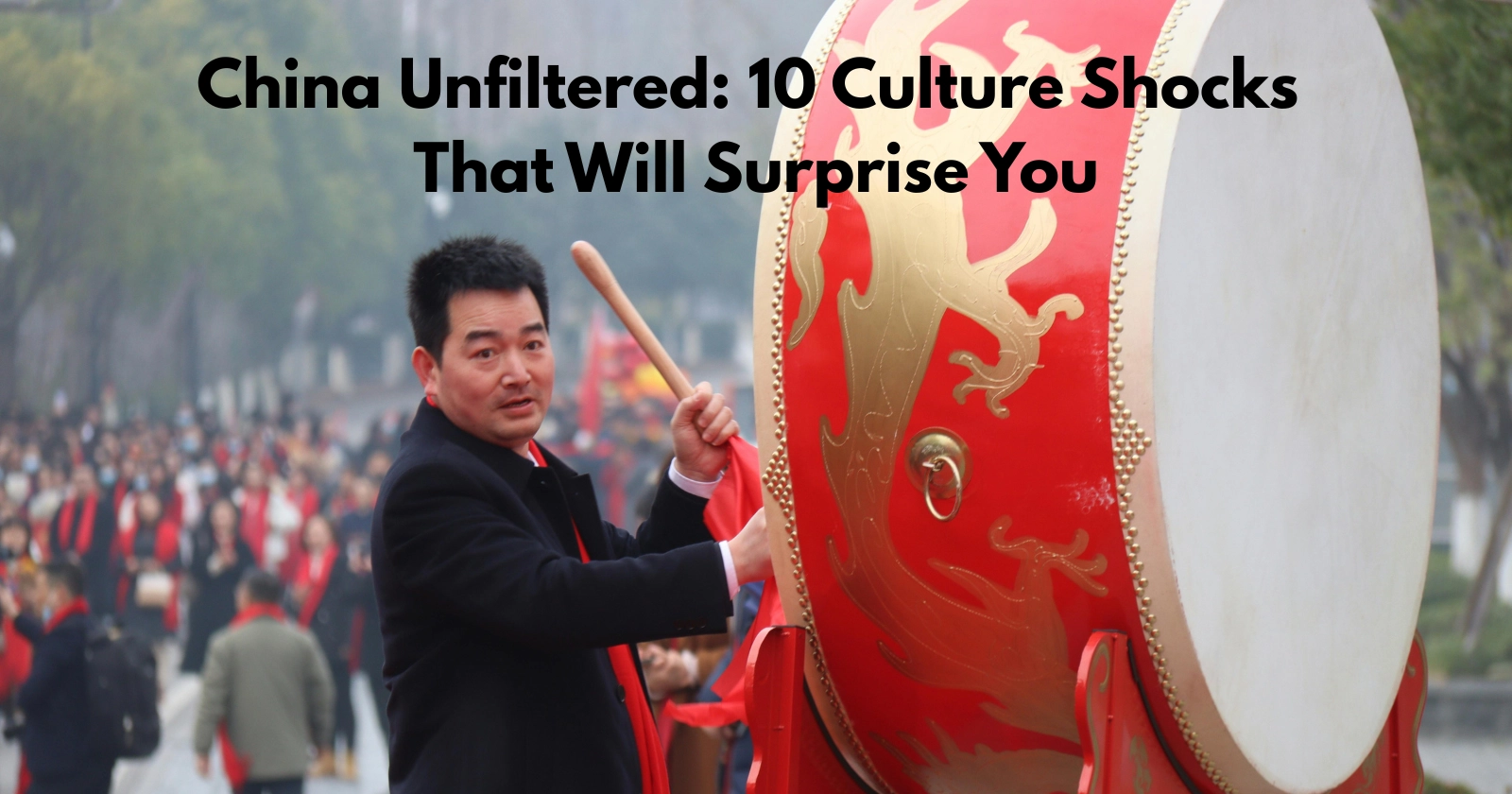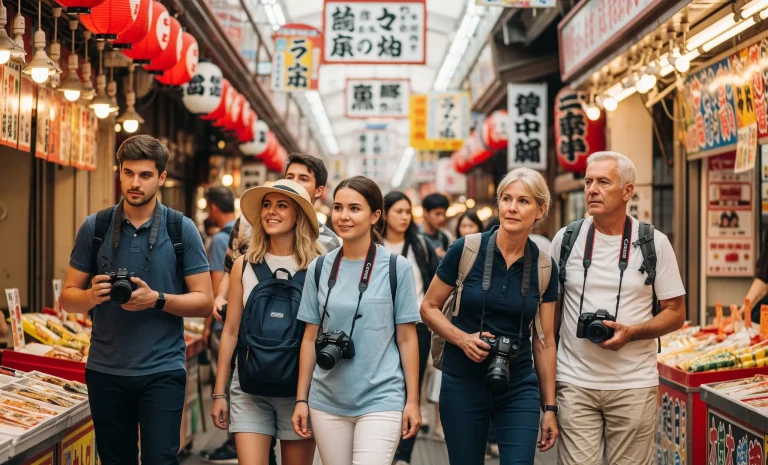
China is a land of unparalleled history, breathtaking landscapes, and a society that pulses with dynamic energy. For many, it represents a profound journey into a civilization unlike any other. As someone who is half Chinese and has the privilege of visiting the country once or twice a year, I’ve had countless opportunities to witness its evolving tapestry firsthand.
While guidebooks might prepare you for the Great Wall or the Forbidden City, they often fall short in conveying the subtle yet profound differences in daily life and social interaction that constitute genuine China culture shocks for travelers.
Our journey together will move beyond surface-level observations to explore ten cultural aspects that often surprise visitors, delving into their historical roots, contemporary relevance, and how you can navigate them respectfully. By understanding the ‘why’ behind these differences, we aim to bridge gaps, combat stereotypes, and foster a truly empathetic connection with Chinese culture.
1. The Omnipresent Concept of “Face” (Mianzi)
Perhaps one of the most foundational and pervasive concepts in Chinese society is ‘mianzi‘ (面子), commonly translated as “face.” This isn’t merely about personal pride; it’s a complex social currency tied to reputation, dignity, and social standing, deeply rooted in Confucian principles emphasizing harmony and hierarchy. Losing face can mean public embarrassment or a perceived loss of respect, while giving face elevates another’s status or reputation.
Historically, an individual’s face was intrinsically linked to their family and community. A person’s actions reflected on everyone connected to them, making the preservation of face crucial for social cohesion. In contemporary China, ‘face’ continues to influence interactions from the boardroom to the dinner table. It impacts how people communicate (often indirectly to avoid causing someone to lose face), negotiate, and express disagreement. For instance, a direct refusal might be considered rude; instead, a Chinese counterpart might say “it will be difficult” or “we’ll consider it.” Understanding this nuance allows you to interpret conversations more accurately and interact more gracefully. It is about maintaining social harmony and showing respect for others’ positions.
2. Public Decorum vs. Private Intimacy
One of the initial surprising aspects of Chinese life for many visitors is the stark contrast between public and private behavior. In public spaces, you might observe behaviors that, to a Western eye, seem unusual: loud conversations on cell phones, spitting (though increasingly less common in major cities due to public health campaigns), or children wearing “kaidangku” (open-crotch pants) that allow them to relieve themselves anywhere. These actions are often practical solutions in densely populated environments, historically rooted in a less rigid concept of individual personal space and more communal living.
However, this public bluntness often belies a deep sense of privacy and intimacy within family and close friend circles. Private lives are guarded, and personal feelings are often not openly displayed, especially to strangers. Family bonds are incredibly strong, and interactions within the home are warm and deeply caring. This dichotomy is a fascinating reflection of a society that adapts to collective living while cherishing private relationships. When interacting, while public directness might surprise you, remember that personal questions should still be approached with sensitivity, especially when you are not well-acquainted with someone.
3. The Art of Chinese Food Culture

Food in China is far more than mere sustenance; it’s a profound cultural cornerstone, a social lubricant, and a form of artistic expression. For those accustomed to individual portions, the communal dining style, where dishes are shared family-style, can be a delightful shock. This practice stems from a long history of shared resources and the emphasis on collective harmony. Historically, a meal was a central event for family bonding and social gatherings, reinforcing community ties.
When dining, you might encounter practices like using chopsticks to pick food from shared plates (though serving chopsticks are increasingly common in formal settings) or hosts constantly refilling your bowl as a sign of hospitality. It’s also customary to offer the best pieces to elders or guests first.
Unlike some Western customs, leaving a little food on your plate at the end of a meal can subtly signal that your host has provided more than enough, demonstrating their generosity. Conversely, cleaning your plate might imply you’re still hungry. The sheer diversity of Chinese cuisine, from regional specialties to vibrant street eats, is a constant source of wonder, reflecting centuries of culinary evolution and regional variations.
4. Efficiency and Directness (Sometimes Bluntness)
While Western stereotypes sometimes paint East Asian cultures as indirect, China, in many contexts, can be remarkably direct and efficient. This pragmatic approach is evident in daily interactions, from commerce to public services. For instance, transactional conversations in shops or restaurants might lack the “please” and “thank you” that are standard in English, not because of rudeness, but because the interaction is seen as purely functional. The emphasis is on achieving the objective quickly and clearly.
This directness can sometimes manifest as what might seem like blunt questioning or a lack of personal space in queues. For centuries, Chinese society has prioritized collective goals and practical outcomes, especially in densely populated areas where efficiency is key. For a traveler, this means understanding that a direct question like “Are you married?” or “How much money do you make?” from a new acquaintance, while personal, is often driven by genuine curiosity rather than an attempt to pry. It’s a different social protocol for building connection, often less about small talk and more about establishing relevant facts for a relationship. Embracing this can make navigating your daily interactions much smoother.
5. The Dominance of Mobile Payments
For visitors, one of the most immediate and impactful culture shocks is China’s almost cashless society, driven by the ubiquitous presence of WeChat Pay and Alipay. This digital leapfrog stems from China’s rapid technological advancement and a strong government push towards digital infrastructure, bypassing much of the traditional credit card era. From street vendors selling local snacks to high-end boutiques, nearly every transaction is conducted via QR code scans on smartphones.
This system, while incredibly convenient for locals, can pose a challenge for foreigners without a Chinese bank account or mobile number, as linking international cards can be difficult. It highlights China’s self-contained digital ecosystem and its incredible efficiency. Imagine trying to buy a bottle of water from a small kiosk and realizing they don’t accept cash or card, only a QR code! This digital revolution has transformed daily life, making physical wallets largely obsolete for most urban Chinese. For those traveling in China, it necessitates planning or relying on local friends.
6. The Intricacies of “Guanxi” (Relationships and Networking)

“Guanxi” (关系), loosely translated as “relationships” or “connections,” is a sophisticated social concept that extends far beyond simple networking. It represents a deep, reciprocal web of personal relationships and mutual obligations, crucial for navigating both personal and professional life in China. Its roots lie in the Confucian emphasis on social harmony, loyalty, and the importance of collective identity over individualistic pursuits. Historically, a strong network of guanxi could determine one’s success, safety, and access to resources.
In modern China, ‘guanxi’ still plays a vital role. It’s not about corruption, but about leveraging trusted relationships for favors, opportunities, and smooth interactions. For example, a business deal might hinge less on formal contracts and more on the personal trust built between individuals. A common scenario might involve a favor being asked or given, with the unspoken understanding that it will be reciprocated in the future.
For instance, my aunt once recounted how her friend’s ‘guanxi’ with a hospital director expedited a critical appointment for a family member during a particularly busy period. This illustrates that it’s a dynamic, long-term investment in social capital, built on trust and mutual benefit. Understanding ‘guanxi’ means recognizing the importance of nurturing relationships and appreciating the intricate social fabric that underpins Chinese society.
7. The Constant Hum of Activity and Noise Levels
China’s cities are often described as vibrant, and part of that vibrancy comes from a constant, high level of activity and noise. From the incessant honking of scooter horns (often used as a warning, not an aggressive gesture) to the bustling markets filled with vendors calling out their wares, and public announcements seemingly everywhere, the auditory landscape is incredibly rich. This omnipresent hum reflects the country’s high population density and the energetic pace of daily life. Historically, crowded living conditions meant less emphasis on personal quiet and more on communal interaction.
While it can initially feel overwhelming, this noise is often the soundtrack of a thriving society. It signifies commerce, social interaction, and constant development. For a visitor, adjusting to this sensory input is part of the experience. It’s not a lack of consideration for others, but a different cultural norm around audible space. We learn to tune into the rhythm, appreciating the dynamism that defines Chinese urban centers, a testament to a society that is always moving, always growing.
8. A Different Sense of Personal Space
In many Western cultures, a personal bubble is an unspoken rule, a comfortable distance we maintain from others. In China, particularly in crowded urban environments or on public transport, this concept of personal space is considerably different. You might find people standing much closer than you’re used to in queues, or even a gentle push to get through a crowded area might not be uncommon. This stems from centuries of high population density, where adapting to close proximity became a practical necessity rather than a breach of etiquette.
This isn’t an act of aggression or disrespect; it’s simply a different cultural understanding of proximity in shared spaces. It’s part of the collective experience of navigating a highly populated country. Understanding this helps you avoid misinterpreting actions and instead allows you to adapt. When you’re on a packed subway, for example, the concept of a “personal bubble” simply gives way to the practicalities of fitting everyone in. It’s a testament to the Chinese people’s adaptability and communal spirit, where efficiency often takes precedence in shared public spaces.
9. The Enduring Power of Filial Piety and Family

Filial piety (孝顺, xiàoshùn), the deep respect and care for one’s parents and elders, remains a cornerstone of Chinese society. This Confucian value has shaped family structures and social norms for millennia, emphasizing gratitude, obedience, and support for older generations. Historically, large multi-generational households were common, with elders holding significant authority and receiving profound deference. The family unit has always been the fundamental building block of society in China.
Even as China modernizes, the principles of filial piety continue to powerfully influence daily life. It’s common for adult children to live with or financially support their parents and grandparents. The pressure to succeed and provide for one’s family, especially for only children who bear the sole responsibility for two sets of parents (due to the former One-Child Policy), is immense.
For example, it is a significant expectation for young adults to find a stable job, marry, and have children, bringing honor and continuity to the family line. This deep-seated respect for elders means that when interacting with older Chinese individuals, showing deference and politeness is particularly important. It’s a beautiful aspect of the culture that highlights intergenerational bonds and collective responsibility. The role of filial piety in modern Chinese society continues to evolve, yet its core values persist.
10. A Strong Sense of Patriotism and National Identity
Visitors to China often notice a palpable sense of national pride and patriotism. This strong national identity is deeply rooted in China’s long and complex history, including periods of significant achievement, foreign humiliation, and its remarkable rise in recent decades. The narrative of overcoming adversity and achieving rapid development is a source of immense collective pride, cultivated through education and media. This isn’t jingoism but a genuine and profound love for their country and its people.
This patriotism manifests in various ways: a shared sense of collective purpose, sensitivity to external criticism of China, and a deep appreciation for the nation’s cultural heritage. When engaging in conversations, particularly about politics or international relations, it’s important to approach with sensitivity and respect for this deeply held national pride. It’s a powerful unifying force, creating a shared identity among a diverse population. This strong sense of unity is a key aspect of understanding the collective spirit that often underlies Chinese social dynamics. As the esteemed philosopher and diplomat Hu Shih once said:
Embracing the Unfiltered China
Experiencing China culture shocks for travelers is not about being caught off guard, but about opening oneself to the fascinating differences that make this nation so unique. As someone who navigates these cultural landscapes regularly, I can attest that these “shocks” are merely different facets of a rich and complex civilization. They are invitations to learn, adapt, and appreciate the underlying values and historical contexts that shape daily life.
From the intricate dance of ‘face’ to the vibrant chaos of a crowded city street, each aspect offers a valuable lesson in cross-cultural understanding. By approaching these differences with humility, curiosity, and respect, you will not only avoid misinterpretations but also unlock deeper, more authentic connections with the Chinese people and their profound culture. Embrace the unfiltered China, and you will find an experience that is as enlightening as it is unforgettable, fostering empathy and broadening your worldview in truly meaningful ways.







